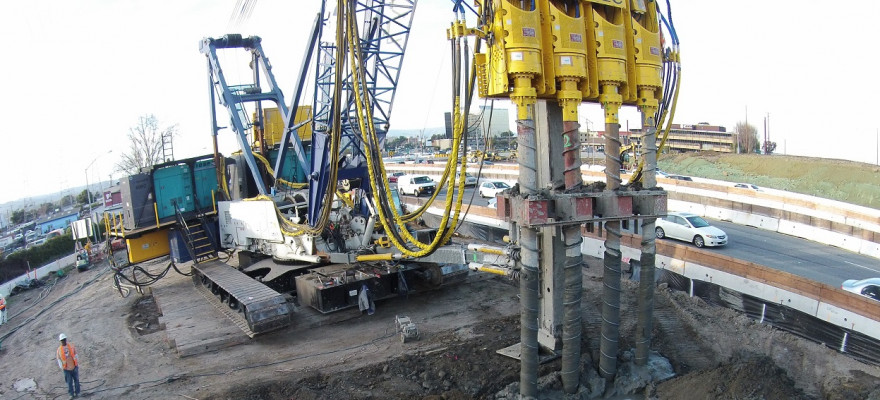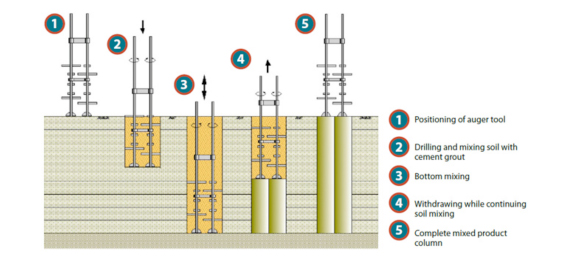Deep Soil Mixing
Deep Soil Mixing by the JAFEC Deep Mixing Method (DMM) is an advanced Ground Improvement method in which cement (or other agents) is mixed with in-situ soil to form-in-place soil-cement columns that increase the strength and reduce the compressibility of soft ground. The process produces a uniform soil-cement column with well-defined geometry. Since DMM can be produced in dry or wet conditions, the method is a candidate for either on-land or off-shore projects.

DMM can be used to stabilize the ground for a variety of heavy on-land or marine structures. It is an excellent method of producing permanent cut-off walls or seepage barriers and when bentonite is added to the grout mix extremely low permeability can be achieved. DMM is an excellent method of constructing both temporary and permanent excavation support walls, particularly in high groundwater conditions. The strength of soil-cement varies with soil type and mix design and can be tailored to the exact application and site condition. DMM can also be used to immobilize and/or fix contaminants and as a treatment system for chemical reduction and containment.

DMM BENEFITS:
- The most advanced Ground Improvement method to produce high-strength soil-cement with reliable engineering properties for support of high vertical and/or lateral loads.
- Versatile in design and application. Soil-cement columns can be arranged in block, wall, or cell configurations to serve various needs.
- Can be used on land or offshore for various soil types including clay, silt, sand, and gravel.
- Cost competitive for a wide range of applications, especially when high-quality Ground Improvement is needed in a very short time.
More than 3,500 DMM projects have been completed since the development of this method in Japan in the 1970s and the method has seen a steep gain in popularity since the mid-1990s.

HOW IT WORKS:
The objective of DMM is to improve the character of the soil, generally its strength, compressibility, and/or permeability. DMM is produced with a mixing tool – consisting of augers and blades – that cuts the in-situ soil and mixes it with the cement or other reagent. This can be done wet or dry. The tool blades can be from 1 to 2+ meters in diameter and mounted singly or in pairs or multiples.
